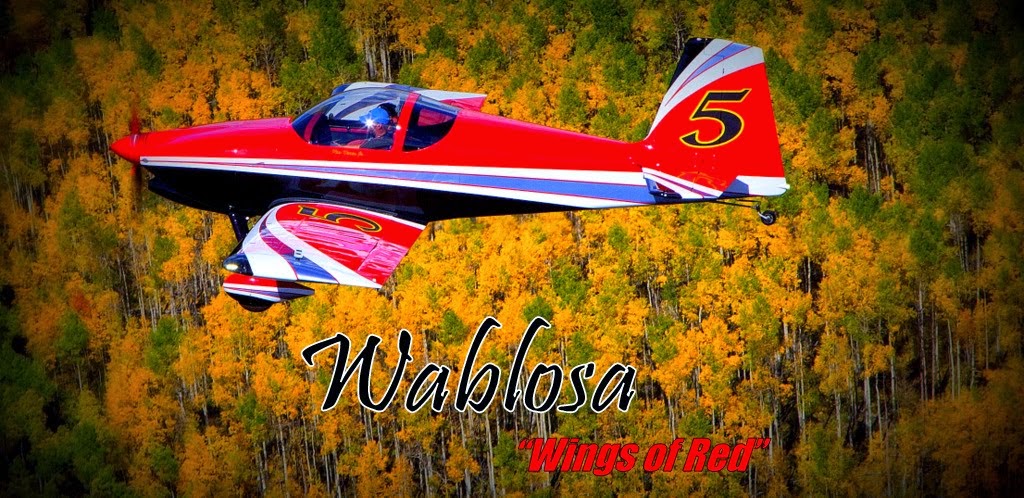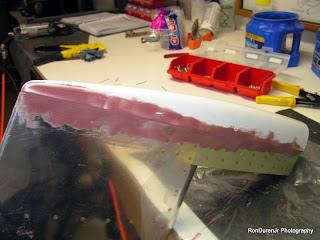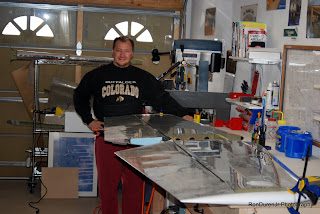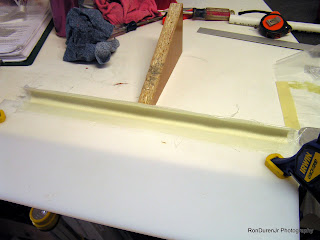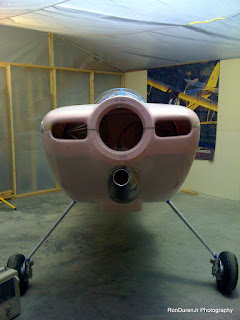 Yesterday I swung by Everitt airfield, home of Rocky Mountain Airpark, to visit Pete Vinton's RV8 project. This is a great airpark property being developed near Parker, CO. Pete is one of the partners. I like Pete quite a bit, in spite of the fact he is a Cornhusker fan! :) If I won the lottery tomorrow, the following day I would be buying a lot out there with a house/hangar/barn and a couple of horses. Check it out here, Rocky Mountain Airpark
Yesterday I swung by Everitt airfield, home of Rocky Mountain Airpark, to visit Pete Vinton's RV8 project. This is a great airpark property being developed near Parker, CO. Pete is one of the partners. I like Pete quite a bit, in spite of the fact he is a Cornhusker fan! :) If I won the lottery tomorrow, the following day I would be buying a lot out there with a house/hangar/barn and a couple of horses. Check it out here, Rocky Mountain AirparkPete recently took delivery of a partially completed RV8 fastback and mentioned he might hang his engine. I wanted to see his project but the engine is what perked my interest since he had purchased the same one I plan to install in my plane. An Aerosport IO-375 (see previous post for a description). I was dying to take a look at this beast. This particular engine dyno-ed at a whopping 217hp at sea level and weighs the same as a 180hp -360!! Thats gonna be impressive in an RV8 fastback!
Although Pete was draggin his feet a little about tackling this job, mumbling about cleaning up the shop or something. His partner Wes and I tore into it like two kids on christmas! There is something that just isnt right about a pretty new engine sitting on a pallet next to an inviting airframe. Although Pete has owned several aircraft, including most recently a C180, he was not entirely familiar with Lycoming engines nor had he hung an engine on an RV before. Wes and I were even less experienced. How hard could it be I thought? It just four bolts...
Well, its only four bolts but it was a little tricky getting them all installed at the same time. Because we were all new to this, it probably took longer than it should have. But, a few hours later, Pete and I were having a cold beer admiring our accomplishment. Wes had a dinner date with his wife for their 22 yr marriage anniversary so he had to bug out before the deed was done so Pete and I finished it up without too much trouble.
As Pete noted, the engine is the "heart of the airplane" that pumps the lifeblood needed for powered flight. Without which, the airframe is just a collection of inanimate parts. To me, hanging the engine is symbolic of the birth of a child, it will be nurtured and grow from here, but this is its start. Certainly a big moment in the evolution of a project and I was happy to share in it. I also learned quite a bit so that when the day comes for me to do it myself, I think it will go much quicker with the knowledge I aquired on this day. It really was a great way to spend a saturday afternoon.
A couple shots of the project. Here you can see the unfinished engine cowl in pretty pink, thats how it arrives from Van's.
A nicely done 'fastback' with aluminum skirt.
Van's stock tailwheel, Pete has already purchased a 'Flyboys' tailwheel that has better ground clearance. He will swap these out later.
He purchased some aftermarket gear legs that are pretty nice. They are all one piece, machined in the shape of a fairing. He says these saved him 11 lbs over the Van's stock legs and look pretty slick.
The engine as it arrives from Aerosport Power in Canada, after uncrating...
The stock valve covers, Pete has ordered an upgrade to these that will say 'IO-375 Magnum' I belive?
On the engine hoist getting ready to move it into position. Wes's son Clay looks on in the background.
And a few shots of the finished results...pretty huh?
